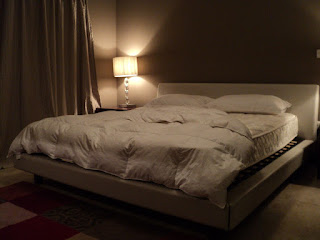 |
| Legendary. |
I am weirdly captivated by the Kaust library. On the one hand it was the backdrop for some of my most trying moments and my mind pushes the thought of it away. On the other hand, those experiences were so strong that they're like a part of me. I won't just remember the library after I'm gone, I'll feel it.
 |
| I've slept here. |
Part of the reason I'll forever feel the library is because it was always so cold. It's gotten a little better this semester, but that first year was brutal. It was like Kaust was training us to become extreme engineers, capable of solving problems in the most inhospitable conditions. I have one pair of jeans and one sweatshirt that I would always put on before going in for a late night. On one occasion I actually brought my comforter from home. This upset the security guards.
Another quick story: one night during the first semester a massive storm hit Kaust. It rained heavily for hours. It started around midnight so naturally I was in the library. After one of my friends came in to spread the news, those of us in the library computer lab got up to have a look. Turns out we didn't have to go far to see the rain because it was leaking through the library roof like a sieve. It wasn't just trickling, it was gushing. Steady streams of water were dousing the whole library--a place full of computers and books--and there wasn't much anyone could do about it. My favorite part was the administration's way of verbally addressing the leaks and deflecting blame from themselves. "You have to understand that this kind of rain only happens once every 20 years in Saudi Arabia!" Wait, so you built the university without expecting it to last 20 years? That's why you didn't waterproof the buildings? Hilarious.
 |
| Where I was when the rain hit. |























